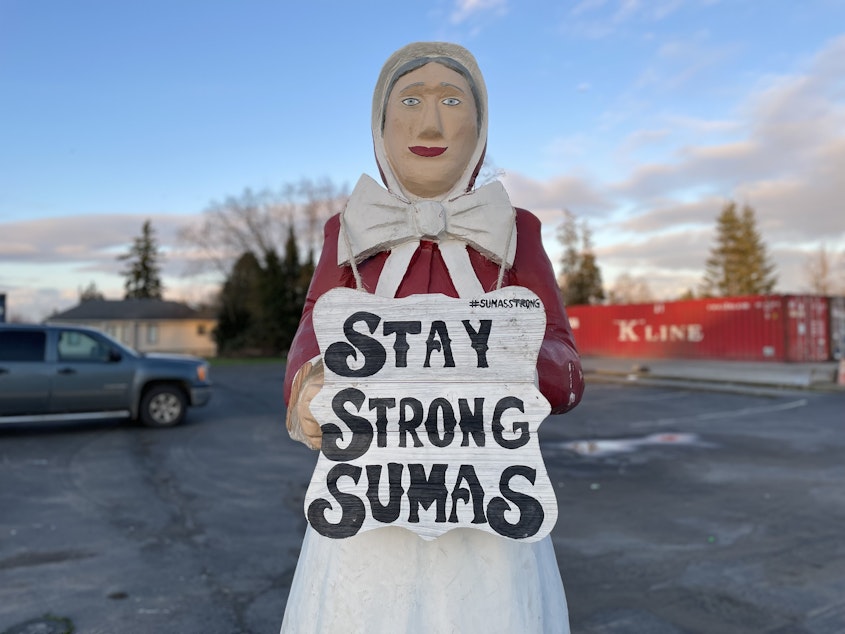This flooded NW Washington town is still 'being put back together' as risk of winter storms grows

The threat of severe weather looms over a small northwest Washington community that is still recovering from November floods.
Sumas Mayor Kyle Christensen says about 85 percent of homes were damaged when the Nooksack River overflowed onto their streets.
"Their houses are still being put back together," he says. "And we're going to continue to be worried about potential flooding even in the next couple of months, as we enter the winter season."
Whatcom County estimates the flooding caused about $50 million in damages.
Local flood victims had until Saturday to apply for emergency cash assistance from the state Department of Social and Health Services.
Governor Jay Inslee declared a severe weather emergency in November to free up the cash. He also sent a letter to President Joe Biden to request federal aid.
Sponsored
Christensen is not expecting any federal money to come through until January at the earliest. For now, his town is relying on volunteers and local organizations.
"It's hard to wait. I know a lot of our residents wish that money was here the day after the flood," he says. "A lot of them don't have flood insurance, so everything they're paying for is coming out of their pocket."
They need cash donations to help people cover those costs, he says, as well as building materials and furniture to replace what was lost.
Donations can be made online; Christensen says the Whatcom Strong site has been the main source of assistance. Those affected can also ask for help with clean-up and other needs.
Sponsored
Christensen drove down the flooded streets in the early hours of November 18 to survey the damage, the full extent of which is still unclear.
The flood was not an isolated incident, but he said the damage was unlike any they’d ever seen.
In some ways, it was a case of déjà vu. But in the bigger picture, it represented what climate scientists say will be the norm in years ahead.
A massive wind and rainstorm triggered flooding and mudslides near the Canadian border. Thousands lost power, and roads were cut off as residents in hard-hit areas, like Sumas, were evacuated.
Locals volunteered boats, tractors and other heavy machinery to help their neighbors escape.
Sponsored
That reactive response won't cut it forever, though.
Christensen wants to see more proactive, long-term solutions.
He's advocating for the removal of sediment that has built up in the riverbed; he says that would improve the towns water storage capacity, thereby reducing the risk of the Nooksack overflowing like it did.
The threat that this will only happen again makes recovery all the more challenging, he says: "Until we address that, it's going to be hard for our businesses and our people up here to feel confident that we're not going to go through this again."
Updates and more information on how to help flood victims can be found here





